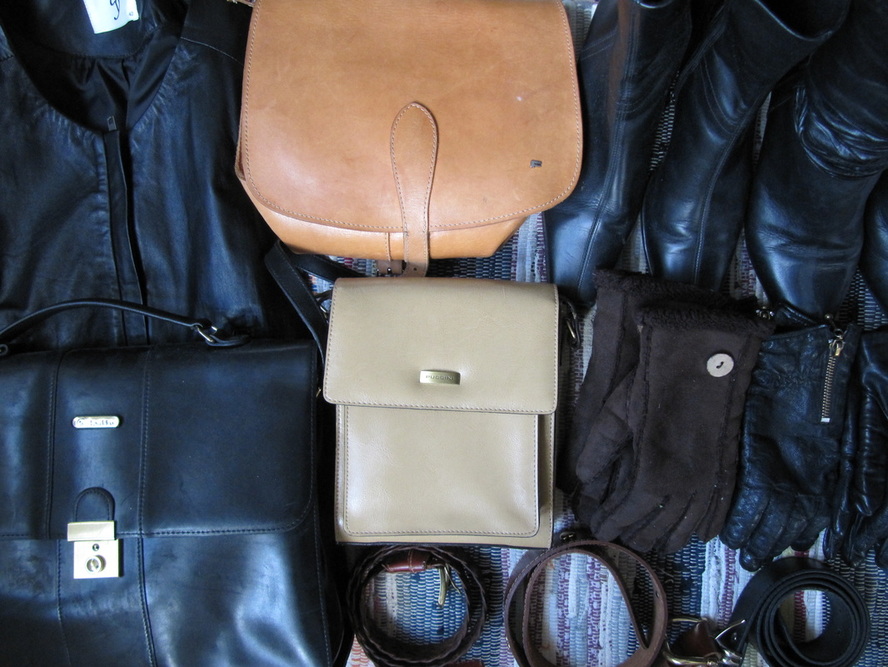If you’re wearing leather, you’re most likely wearing
the skin of a horribly abused animal
The leather industry
Leather shoes, leather bags, leather gloves, leather belts, leather jackets, leather pants, leather wallets, leather sofas, leather car seats... the list goes on and on. Leather is usually made from cattle and calves, but also from other animals such as pigs, goats, sheep or horses. Most of these animals are bred on factory farms where they are confined to extreme small and crowded spaces. The animals are often subject to cruel practices like unanesthetized castration, tail-docking and dehorning, long and inhumane transports and mistreatment during slaughter.
Exotic animals
Leather can also be made from exotic animals such as zebras, bison, water buffalo, boars, elephants, eels, sharks, dolphins, seals, walruses, alligators, crocodiles, ostriches, kangaroos and snakes. The reptiles are often kept in very small tanks, which causes the animals injuries and stress. Alligators on farms may be beaten to death, and sometimes they remain conscious and in agony several hours after they have been skinned. Orphaned or injured kangaroos are allowed to be decapitated or hit sharply on the head to destroy the brain. Snakes may be skinned alive because of the false belief that live flaying makes exotic leather more supple.
Non-existent or unenforced animal protection laws
A large portion of the leather comes from countries with non-existent or unenforced animal protection laws, such as India and China. In India the cows are marched to the slaughterhouse for days without food or water. The workers break the cows’ tails and rub chili peppers and tobbacco into their eyes forcing them to get up and walk after they collapse from exhaustion. Most animals are injured or sick when they reach the slaughterhouse. Once inside, their feet are bound together and their throats are cut, often with dirty, blunt knives in full view of one another. The floors are covered with feces, urine, blood and guts. Some animals are even skinned and dismembered alive.
Dog and cat leather
The world’s leading leather exporter is China, where there are no penalties for abusing animals on farms. Apart from cattle, sheep and other animals killed for leather, approximately 2 million cats and dogs are killed for their skins each year. Dog and cat skins are used for leather gloves, belts, jacket collar trim, accessories, trinkets and cat toys. The dogs and cats spend their lives in tiny wire cages and they feel the ground beneath their feet for the first time on the day of their slaughter. At the slaughterhouse, the workers grab the dogs with metal pinchers and bash them over the head with a pole. Many dogs don’t fall unconscious, and they cry out and writhe in agony. The cats and dogs are often skinned and hacked to peaces while they’re still alive and struggling to breathe. Dog leather is also produced in Thailand, where the animals are subject to the same abuse as in China.
False or misleading product labelling
Products made from dog and cat leather are exported throughout the world, and they are usually not labelled, which goes for other leather products as well. Even if you buy shoes ”Made in Italy” the raw materials are probably from China or India. The products can also be intentionally mislabelled. For instance leather products made from dog leather in China can be labelled as sheep leather. Every time you buy leather there’s a very big chance that it came from a horribly abused animal.
Health and environmental damage
Apart from causing enormous animal suffering, the leather industry is harmful to human health and the environment. The leather manufacturing process includes using very dangerous chemicals, which increases the cancer risk. Huge amounts of fossil fuels are consumed in livestock production creating waste and pollution.
Don't buy leather!
The best solution is to stop buying leather altogether. There are many affordable nonleather alternatives such as cotton, linen, rubber, ramie, canvas, and synthetics. For more information, please see PETA’s Shopping Guide to Compassionate Clothing.
